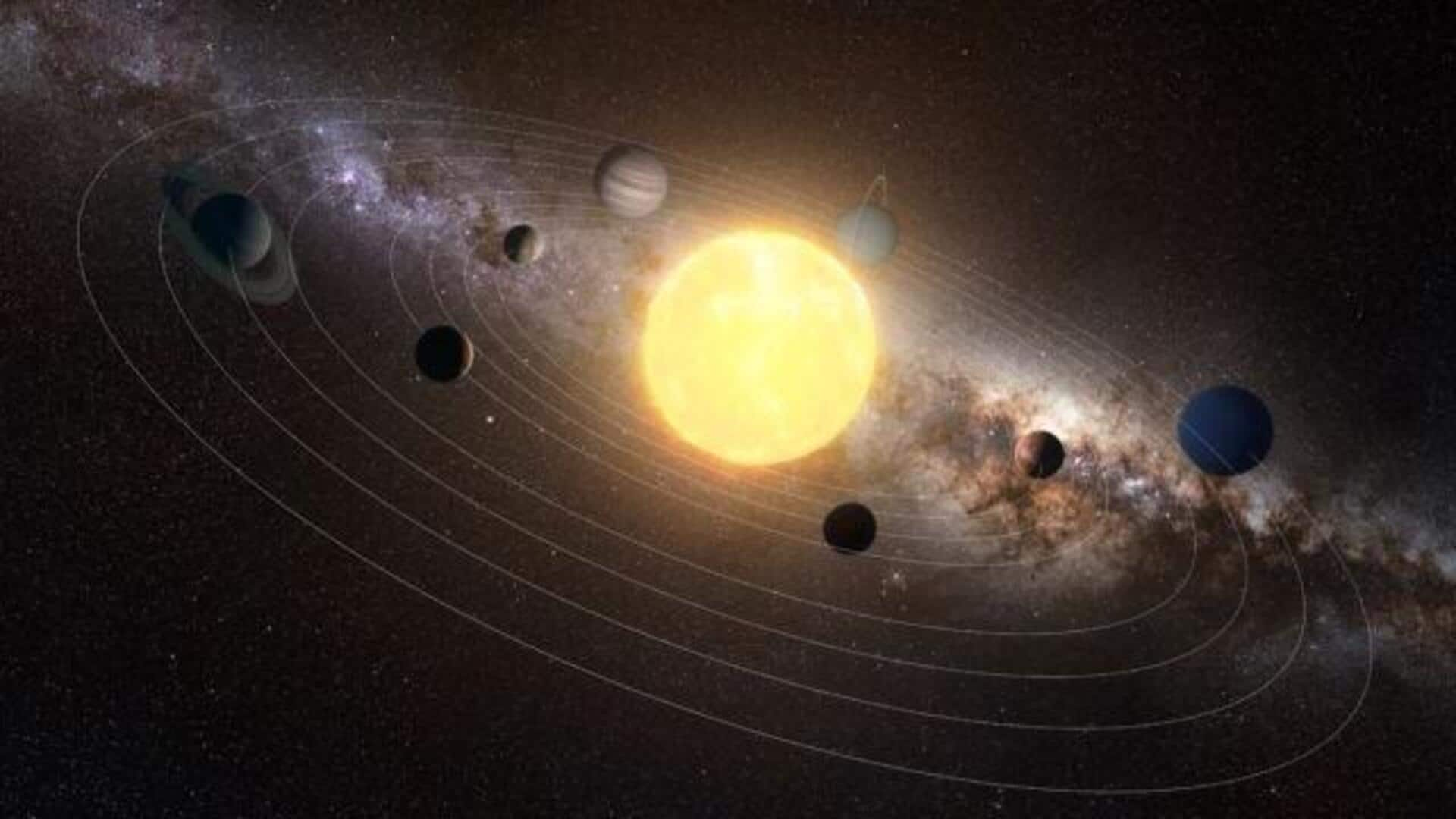
Scientists discover our solar system used to have donut shape
What's the story
Scientists have unearthed evidence suggesting that the solar system was once more donut-shaped than pancake-like.
This conclusion was drawn from the study of iron meteorites from the outer solar system.
The distribution of dust and rocks in these meteorites could only be explained if the initial shape of the solar system was toroidal, according to researchers.
This information can also aid us in interpreting other emerging planetary systems, and determining the order in which they form.
Insights
Iron meteorites offer clues to the solar system's past
Planetary system formation starts in a molecular cloud of gas and dust drifting through space.
If part of this cloud becomes too dense, it collapses under its gravity, forming the seed of a star.
As the protostar spins, the material in the surrounding cloud forms a circling disk that feeds into it.
Within that disk, smaller clumps develop into protoplanetary seeds, which either grow into full planets or, more commonly, have their development arrested and remain smaller objects like asteroids.
What's more?
Asteroid composition reveals toroidal formation
According to a team led by planetary scientist Bidong Zhang, the composition of asteroids in the outer solar system shows that the material cloud must be donut-shaped, rather than a series of concentric rings in a flat disk.
This means that the initial stages of the system's formation are toroidal.
The iron meteorites in question contain higher concentrations of refractory metals than those found in the inner solar system. These metals can only form in very hot environments.
Conundrum
Outer solar system meteorites present interesting puzzle
The discovery of these metal-rich meteorites originating from the outer solar system presents an intriguing puzzle.
These meteorites must have formed close to the Sun and moved outward as the protoplanetary disk expanded.
However, Zhang and his team's modeling suggests these iron objects would not have been able to traverse gaps in a flat disk.
The team concluded that these objects could have migrated most easily if the protoplanetary structure was toroidal-shaped.
Planetary involvement
Jupiter's role in shaping the solar system
Zhang explained, "Once Jupiter formed, it very likely opened a physical gap that trapped the iridium and platinum metals in the outer disk and prevented them from falling into the Sun."
This process would have permitted these metals to be incorporated into asteroids that formed in the outer disk.
Consequently, this explains why meteorites from this region have significantly higher iridium and platinum contents than their inner-disk counterparts.